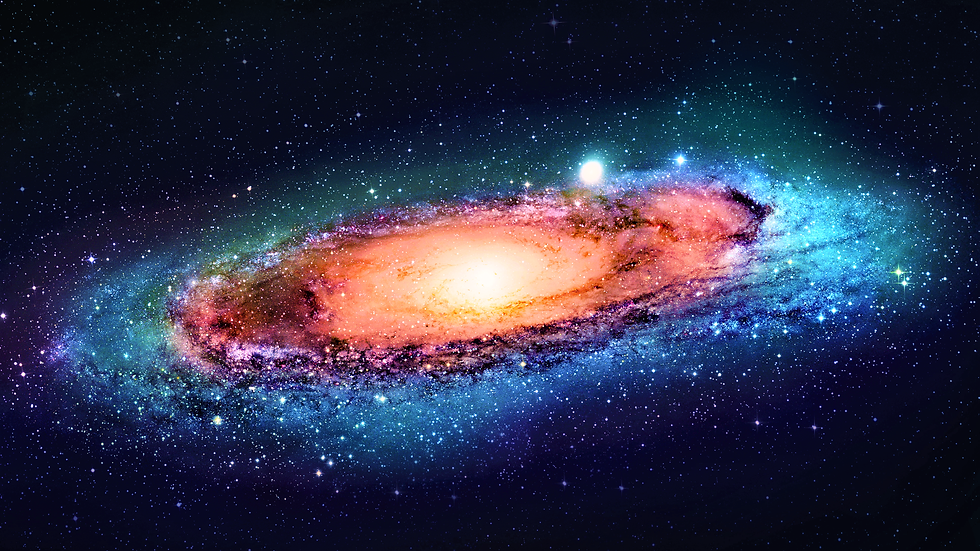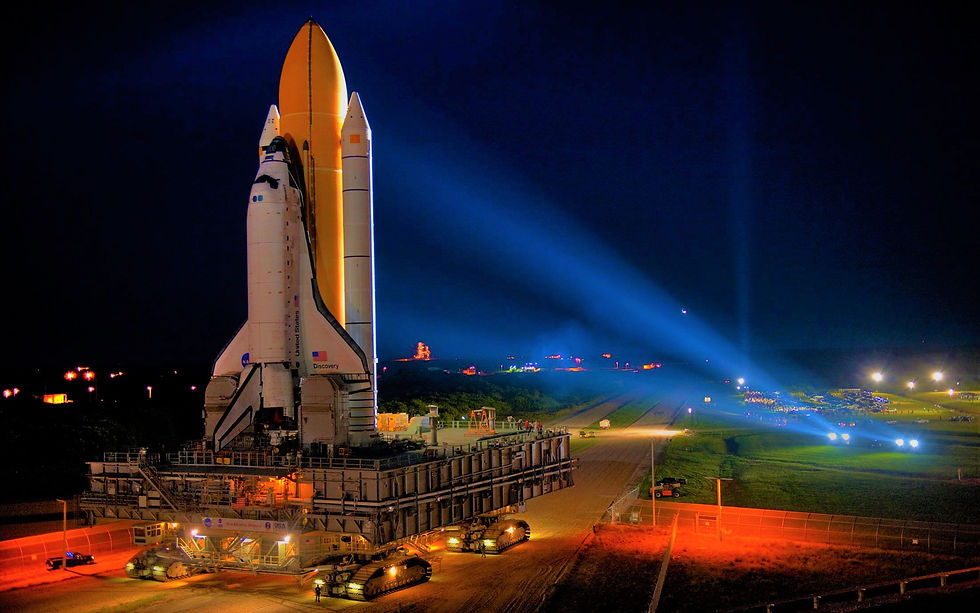Moon
- pilot55kassas55
- 18 يوليو 2022
- 4 دقيقة قراءة
تاريخ التحديث: 18 يوليو 2022
The Moon is Earth's only natural satellite. At about one-quarter the diameter of Earth (comparable to the width of Australia), it is the fifth largest satellite in the Solar System, the largest satellite in the Solar System relative to its major planet, and larger than any known dwarf planet. The Moon is a planetary-mass object that formed a differentiatedrocky body, making it a satellite planet under the geophysical definitions of the term.
It lacks any significant atmosphere, hydrosphere, or magnetic field. Its surface gravity is about one-sixth of Earth's (0.1654 g). Jupiter's moon Io is the only satellite in the Solar System known to have a higher surface gravity and density.
Orbiting Earth at an average distance of 384,400 km (238,900 mi), or about 30 times Earth's diameter, its gravitational influence very slowly lengthens Earth's day and is the main driver of Earth's tides. The Moon's orbit around Earth has a sidereal period of 27.3 days. During each synodic period of 29.5 days, the amount of visible surface illuminated by the Sun varies from none up to 100%, resulting in lunar phases that form the basis for the months of a lunar calendar. The Moon is tidally locked to Earth, which means that the length of a full rotation of the Moon on its own axis causes its same side (the near side) to always face Earth, and the somewhat longer lunar day is the same as the synodic period. That said, 59% of the total lunar surface can be seen from Earth through shifts in perspective due to libration.

The Moon's Surface
From lunar orbit, astronauts pointed cameras out the window of their spacecraft to capture photos of the moon's surface.
The closest look we’ve had at the moon came from the launch of NASA’s Apollo program in the 1960s. Between 1967 and 1972, a series of missions landed the first men on the moon. Equipped with handheld cameras, Apollo astronauts documented their journey, capturing photos of the moon and its rocky terrain through surveys conducted from lunar orbit and on the ground. The collection of moon exploration photos includes up-close views of impact craters, mountain ranges, volcanic channels and maria—dark regions believed to have been formed from molten rock. The images are part of a massive archive of more than 14,000 photos taken by Apollo astronauts.

Is There An Atmosphere On The Moon?
The Moon has an atmosphere so tenuous as to be nearly vacuum, with a total mass of less than 10 tonnes (9.8 long tons; 11 short tons).[84] The surface pressure of this small mass is around 3 × 10−15atm (0.3 nPa); it varies with the lunar day. Its sources include outgassing and sputtering, a product of the bombardment of lunar soil by solar wind ions.
Elements that have been detected include sodium and potassium, produced by sputtering (also found in the atmospheres of Mercury and Io); helium-4 and neon from the solar wind; and argon-40, radon-222, and polonium-210, outgassed after their creation by radioactive decay within the crust and mantle. The absence of such neutral species (atoms or molecules) as oxygen, nitrogen, carbon, hydrogen and magnesium, which are present in the regolith, is not understood.
Water vapor has been detected by Chandrayaan-1 and found to vary with latitude, with a maximum at ~60–70 degrees; it is possibly generated from the sublimation of water ice in the regolith. These gases either return into the regolith because of the Moon's gravity or are lost to space, either through solar radiation pressure or, if they are ionized, by being swept away by the solar wind's magnetic field.
Moon Gravity
The acceleration due to gravity on the surface of the Moon is approximately 1.625 m/s2, about 16.6% that on Earth's surface or 0.166 ɡ. Over the entire surface, the variation in gravitational acceleration is about 0.0253 m/s2 (1.6% of the acceleration due to gravity). Because weight is directly dependent upon gravitational acceleration, things on the Moon will weigh only 16.6% (= 1/6) of what they weigh on the Earth.
Orbit Of The Moon
The MoonorbitsEarth in the prograde direction and completes one revolution relative to the Vernal Equinox and the stars in about 27.32 days (a tropical month and sidereal month) and one revolution relative to the Sun in about 29.53 days (a synodic month). Earth and the Moon orbit about their barycentre (common centre of mass), which lies about 4,670 km (2,900 mi) from Earth's centre (about 73% of its radius), forming a satellite system called the Earth–Moon system. On average, the distance to the Moon is about 385,000 km (239,000 mi) from Earth's centre, which corresponds to about 60 Earth radii or 1.282 light-seconds.
With a mean orbital velocity of 1.022 km/s (0.635 miles/s), the Moon covers a distance approximately its diameter, or about half a degree on the celestial sphere, each hour. The Moon differs from most satellites of other planets in that its orbit is close to the ecliptic plane instead of to its primary's (in this case, Earth's) equatorial plane. The Moon's orbital plane is inclined by about 5.1° with respect to the ecliptic plane, whereas the Moon's equatorial plane is tilted by only 1.5°.

Can We Go To The Moon?
Going to the moon is not for tourism and pleasure, but for exploration missions and scientific research, sending a manned vehicle to the moon is not easy, as it requires a lot of skill, experience and high efficiency in controlling the lunar vehicle and landing on the moon.
We should also know that going to the moon is full of dangers that threaten the life of astronauts . Going to a place that is unsupported by life, in the event of any emergency, there are no rescue teams to save the astronauts, this means that the astronauts must adhere to the procedures that they have, because there is no room for error . Sitting and contemplating the moon from home at night is better than going to it .





تعليقات